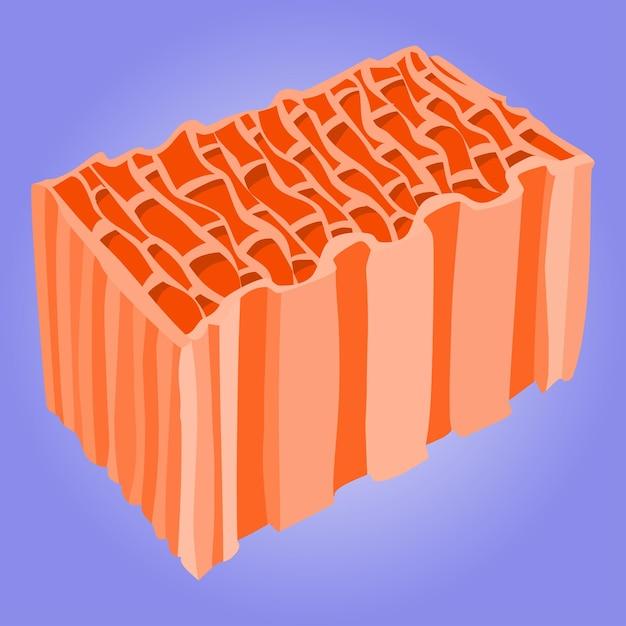The human body is a wondrous creation, full of complex systems that work together seamlessly. One such marvel is the pseudostratified columnar epithelium, a specialized tissue found in various regions of the body. But what exactly is its main function? In this blog post, we delve into the captivating world of epithelial cells and unravel the secrets of the pseudostratified columnar epithelium.
Epithelium, the thin layer of cells that covers the body’s surfaces and lines its cavities, plays a critical role in protecting and regulating bodily functions. These cells come in different shapes and arrangements, each designed for specific tasks. One variant, the pseudostratified columnar epithelium, exhibits a unique structural design that sets it apart. From its fascinating characteristics to its pivotal role in a specific body system, we will explore it all. So, let’s embark on this scientific journey together and discover the fundamental role of the pseudostratified columnar epithelium.

What is the Main Function of the Pseudostratified Columnar Epithelium
The pseudostratified columnar epithelium may sound like a tongue-twister, but it plays a vital role in our bodies. This remarkable tissue is found in various parts of our respiratory system, such as the trachea, bronchi, and nasal cavity. Let’s dive into the fascinating main functions of this specialized epithelium.
Keeping Things Moving with Mucociliary Escalator
One of the main functions of the pseudostratified columnar epithelium is to assist in the movement of mucus and debris. Picture tiny, hair-like structures called cilia, waving their microscopic hands in unison, propelling the mucus forward like synchronized swimmers. This incredible team effort, known as the mucociliary escalator, helps to sweep away any unwanted particles that enter our respiratory system, preventing them from causing trouble.
Stopping the Invaders
Our respiratory system is a gateway for all sorts of unwelcome visitors, including pesky pathogens and harmful substances. Luckily, the pseudostratified columnar epithelium has a few tricks up its cellular sleeve. The specialized cells of this epithelium are armed with goblet cells, which produce and secrete mucus. This sticky substance acts as a trap for foreign invaders, preventing them from going any further and potentially causing harm.
Humidifying and Conditioning the Air
Imagine breathing in dry, unfiltered air all day long—talk about uncomfortable! The pseudostratified columnar epithelium steps in to save the day by adding a touch of moisture and warmth to the air we breathe. The mucus secreted by the epithelial cells not only traps unwanted particles but also moisturizes the air, preventing our delicate respiratory tissues from drying out. Additionally, the blood vessels beneath this epithelium help in warming up the inhaled air, making it more comfortable for our lungs.
Sniffing Out the World
If you’ve ever marveled at the wonders of your sense of smell, you can thank the olfactory epithelium—a specialized type of pseudostratified columnar epithelium found in the nasal cavity. Buried deep within our noses, this incredible tissue is responsible for detecting and relaying smells to our brain. It contains millions of olfactory receptor cells, sending signals to our brain that allow us to distinguish between the fragrance of a blooming flower and the pungent smell of a ripe cheese.
Protection and Defense!
In addition to its primary functions, the pseudostratified columnar epithelium serves as a defender of our respiratory system. This barrier not only prevents foreign invaders from entering our lungs but also secretes antimicrobial substances, providing an extra layer of protection against potential microbial threats. It’s like having a team of well-trained bouncers guarding the entrance to an exclusive club—no shady characters get past them!
Now that we’ve uncovered the main functions of the pseudostratified columnar epithelium, it’s clear that this specialized tissue is nothing short of amazing. From keeping our respiratory system clean to protecting it from harm, this tissue deserves recognition for its crucial role in maintaining our overall health and well-being. So, let’s give a round of applause to the pseudostratified columnar epithelium for its tireless efforts in keeping us breathing easy!

Pseudostratified Columnar Epithelium: Your Top FAQs Answered!
Are you curious to learn more about the mysterious and intriguing Pseudostratified Columnar Epithelium? Well, you’ve come to the right place! In this FAQ-style subsection, we’ll explore the main functions, characteristics, and fascinating aspects of this remarkable tissue. So sit back, relax, and prepare to have all your burning questions answered!
What is the function of the Pseudostratified ciliated
Ah, the Pseudostratified Ciliated Epithelium, a real tongue twister! But fear not, we’ll break it down for you. The main function of this special tissue is to line the respiratory tract, from the nasal cavity all the way down to the bronchi. Its cilia, those tiny hair-like structures waving in unison, play a crucial role in trapping nasty particles and propelling mucus upwards. Think of it as your body’s very own cleaning crew, sweeping away potential threats and keeping your airways pristine.
What is the main function of the Pseudostratified columnar epithelium
Ah, the Pseudostratified Columnar Epithelium, the multi-talented hero of our body’s internal lining! Its main function is to protect and line various areas, including the respiratory tract, male reproductive ducts, and parts of the female reproductive system. With its tall, elongated cells and a nucleus positioned at different levels, it gives off a “stratified” illusion. But don’t be fooled, it’s actually more like a cleverly coordinated team of cells working together to keep everything in balance.
How many layers are in Pseudostratified epithelium
If you thought the Pseudostratified Epithelium was only pretending to be complex, think again! Despite its deceptive appearance, this tissue is technically single-layered. Yes, you heard that right – it’s a one-layer wonder! The varying position of cell nuclei creates the illusion of multiple layers, adding a touch of artistic flair to our body’s architecture.
What is the main function of cuboidal epithelium
Ah, the Cuboidal Epithelium, the unsung hero of glands and ducts! Its main function is to facilitate secretion and absorption. Picture a bustling factory where the cuboidal cells work hard to produce and release important molecules. These cells are shaped like little cubes, perfectly customized for their job. So the next time you marvel at the efficiency of your body’s glands, remember to give a silent shout-out to the hardworking cuboidal epithelium!
What are the characteristics of Pseudostratified columnar epithelium
Ah, the Pseudostratified Columnar Epithelium, a true showstopper among tissues! Let’s dive into its unique characteristics. Firstly, its cells are elongated and frequently possess cilia, those mesmerizing hair-like structures that seem so effortlessly cool. Secondly, the nuclei of these cells are peculiarly positioned at various levels, giving the illusion of stratification. Thirdly, this fascinating tissue often features goblet cells, which are responsible for producing mucus. Talk about a multitasking superstar!
What regulates what an epithelium can absorb
Ah, the delicate balance of absorption regulation! It’s a dazzling dance of ions and proteins, tightly controlled by the all-mighty epithelial cells themselves. These remarkable cells possess selectively permeable membranes that determine what substances can dodge their embrace and be absorbed into our body. So, next time you marvel at the wonders of cellular regulation, take a moment to salute these gatekeepers of absorption!
What body system contains Pseudostratified columnar epithelium
Prepare to take a deep breath, because the Pseudostratified Columnar Epithelium is a superstar of the respiratory system! From the nasal cavity, where it catches all those pesky particles floating around, to the bronchi within your lungs, this remarkable tissue lines the airways and ensures they stay in tip-top shape. So the next time you inhale deeply and savor the crisp air, remember to give a nod of appreciation to your trusty Pseudostratified Columnar Epithelium!
What is epithelium function
Ah, the unsung wonders of epithelial tissues! Their main function is to protect and cover our body’s surfaces, both internally and externally. Whether it’s the lining of our organs, the surface of our skin, or the intricate network of cells within our blood vessels, epithelial tissues are the guardians of our body. They provide protection against harm, act as barriers against pathogens, assist in absorption and secretion, and even participate in sensory reception. In essence, they’re like the body’s very own superhero costume, ready to defend us from the evils of the world!
And there you have it, folks! The most burning questions about Pseudostratified Columnar Epithelium, answered with a sprinkle of humor and a dash of insightful information. Hopefully, you’ve gained a newfound appreciation for this remarkable tissue and its vital role in keeping our bodies functioning smoothly. Stay curious, keep exploring, and never stop marveling at the intricacies of our wondrous anatomy!
